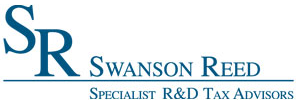Maryland R&D Tax Credit Filing Instructions
To claim the Research and Development (R&D) tax credit in Maryland, businesses must first apply to the Maryland Department of Commerce. This application, which is typically an online submission, must be made by November 15th of the calendar year following the tax year in which the R&D expenses were incurred. The Department of Commerce reviews these applications and issues a tax credit certificate with the approved amount by February 15th of the subsequent calendar year.
Once the certification is received, businesses can then claim the credit on their Maryland income tax return. For individuals, this is done by completing Part D of Form 502CR, Income Tax Credits for Individuals, and attaching it to their Maryland income tax return (Form 502). Businesses will report the credit on their respective Maryland income tax forms (e.g., Form 502 for individuals, Form 505 for pass-through entities, or Form 515 for corporations). A copy of the tax credit certificate issued by the Department of Commerce must be attached to the tax return to substantiate the claim. If the credit exceeds the tax liability, unused portions may be carried forward, and for small businesses, certain credits can be refundable.
Maryland Patent of the Year – 2024/2025
Sonavex Inc. has been awarded the 2024/2025 Patent of the Year for their innovative ultrasound-detectable medical device. Their invention, detailed in U.S. Patent No. 11858181, titled ‘Microcavity-containing polymeric medical devices for enhanced ultrasonic echogenicity’, this invention introduces a novel approach to improving the visibility of medical implants during ultrasound imaging.
The patented device features a polymeric structure with microcavities dispersed within its core. These microcavities reflect ultrasonic signals, enhancing the device’s echogenicity and making it more visible on ultrasound scans. This design addresses the challenge of poor visibility of certain medical implants, such as markers or catheters, which can complicate procedures and follow-up care.
By incorporating microcavities, the device ensures strong image contrast throughout its entire cross-section, regardless of the angle of the ultrasound beam. This robust visibility is crucial for accurate placement and monitoring of medical implants, potentially reducing complications and improving patient outcomes.
Manufactured using resorbable polymers, the device is designed to safely degrade within the body over time, minimizing the need for surgical removal. This innovation marks a significant advancement in medical device technology, offering a practical solution to enhance the effectiveness of ultrasound-guided procedures.
Study Case
IVO Tech (IVO) is a leading software company specializing in employment screening software. The company was founded to provide new and innovative technologies to employment screening firms to help them improve productivity, reduce overhead, and have technological competitive advantages over otherwise similar firms.
IVO incurred qualified research expenses relating to the development of numerous innovative features in 2011-2013. IVO had never claimed the R&D tax credit before and was unaware it was performing qualified activities. After meeting with a specialist and learning more about R&D, IVO realized it was eligible for the credit.
The R&D tax credit specialist helped IVO determine its qualifying R&D activities, many of which were part of the company’s daily operations. IVO’s qualified research expenses (QRE) included:
- Development of new or improved software features to meet changing consumer preferences;
- Improvement to processing speeds
- Improvements for storage
- Testing across all supported releases to determine exposure
- Experimentation with possible fixes until an adequate solution was determined
- Creating and executing test cases to eliminate uncertainty prior to releasing software to customers
After adding up labor and supplies costs from 2011-2013, IVO spent $1.95 million on R&D for those three years. IVO claimed the Federal R&D Tax Credit and received a $45,000 tax credit.
After realizing the benefits, a sustainable methodology was also established to help IVO identify, document and substantiate eligible R&D projects and costs on an ongoing basis.
Qualified research consists of research for the intent of developing new or improved business components. A business component is defined as any product, process, technique, invention, formula, or computer software that the taxpayer intends to hold for sale, lease, license, or actual use in the taxpayer’s trade or business.
The Four-Part Test
Activities that are eligible for the R&D Credit are described in the “Four-Part Test” which must be met for the activity to qualify as R&D.
- Permitted Purpose: The purpose of the activity or project must be to create new (or improve existing) functionality, performance, reliability, or quality of a business component.
- Elimination of Uncertainty: The taxpayer must intend to discover information that would eliminate uncertainty concerning the development or improvement of the business component. Uncertainty exists if the information available to the taxpayer does not establish the capability of development or improvement, method of development or improvement, or the appropriateness of the business component’s design.
- Process of Experimentation: The taxpayer must undergo a systematic process designed to evaluate one or more alternatives to achieve a result where the capability or the method of achieving that result, or the appropriate design of that result, is uncertain at the beginning of the taxpayer’s research activities.
- Technological in Nature: The process of experimentation used to discover information must fundamentally rely on principles of hard science such as physical or biological sciences, chemistry, engineering or computer science.
What records and specific documentation did IVO Tech keep?
Similar to any tax credit or deduction, IVO had to save business records that outlined what it did in its R&D activities, including experimental activities and documents to prove that the work took place in a systematic manner. IVO saved the following documentation as evidence:
- Innovation Log
- Records of changes and bug fixes
- Photographs/ videos of testing
- Testing protocols
- Results or records of analysis from testing/ trial runs
- Tax invoices
- Receipts
- Labor time sheets
By having these records on file, IVO confirmed that it was ‘compliance ready’ — meaning if it was audited by the IRS, it could present documentation that illustrated the progression of its R&D activity, therefore proving its R&D eligibility.
Click here to view the PDF version of this case study.
An Annapolis firm designs components for the telecommunications industry. The company claims R&D credits each year for the design and development activities of its engineers. This project involved a multi-year study.
The Company qualified for The federal R&D Tax Credit of $990,938 and an additional $200,000 in Maryland state R&D Tax Credit.
| FEDERAL | MARYLAND | |||||
| Year | Total QREs | Credit | Total QREs | Credit | ||
| Year 4 | $4.000.000,00 | $348.444,00 | $4.000.000,00 | $200.000,00 | ||
| Year 3 | $3.500.000,00 | $301.000,00 | N/A | N/A | ||
| Year 2 | $2.700.000,00 | $226.226,00 | N/A | N/A | ||
| Year 1 | $1.300.000,00 | $115.268,00 | N/A | N/A | ||
| Total | $11.500.000,00 | $990.938,00 | $4.000.000,00 | $200.000,00 | ||
Choose your state


















 [...]
[...] [...]
[...]
